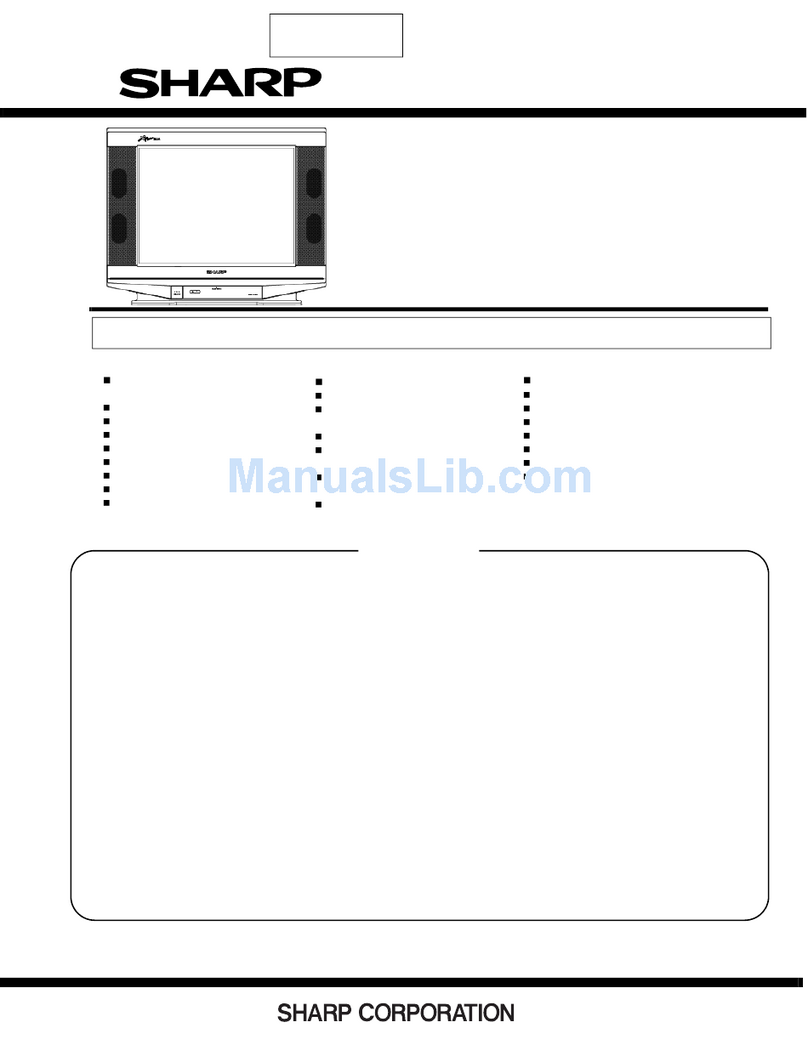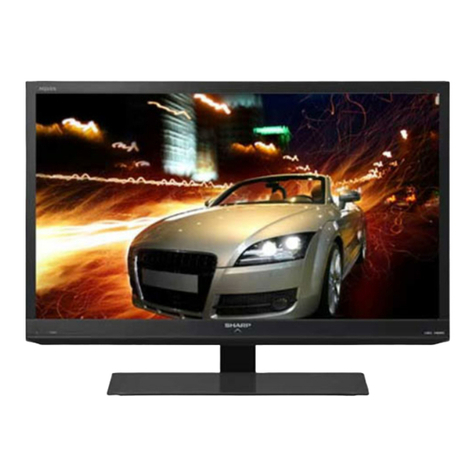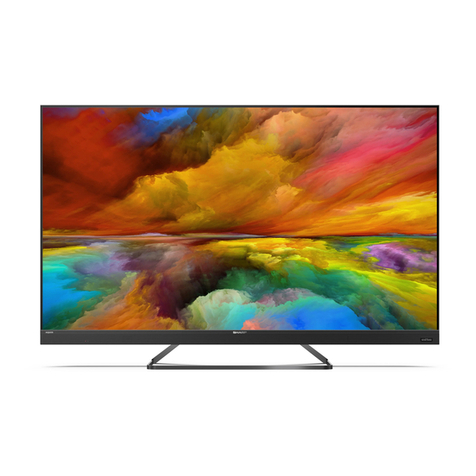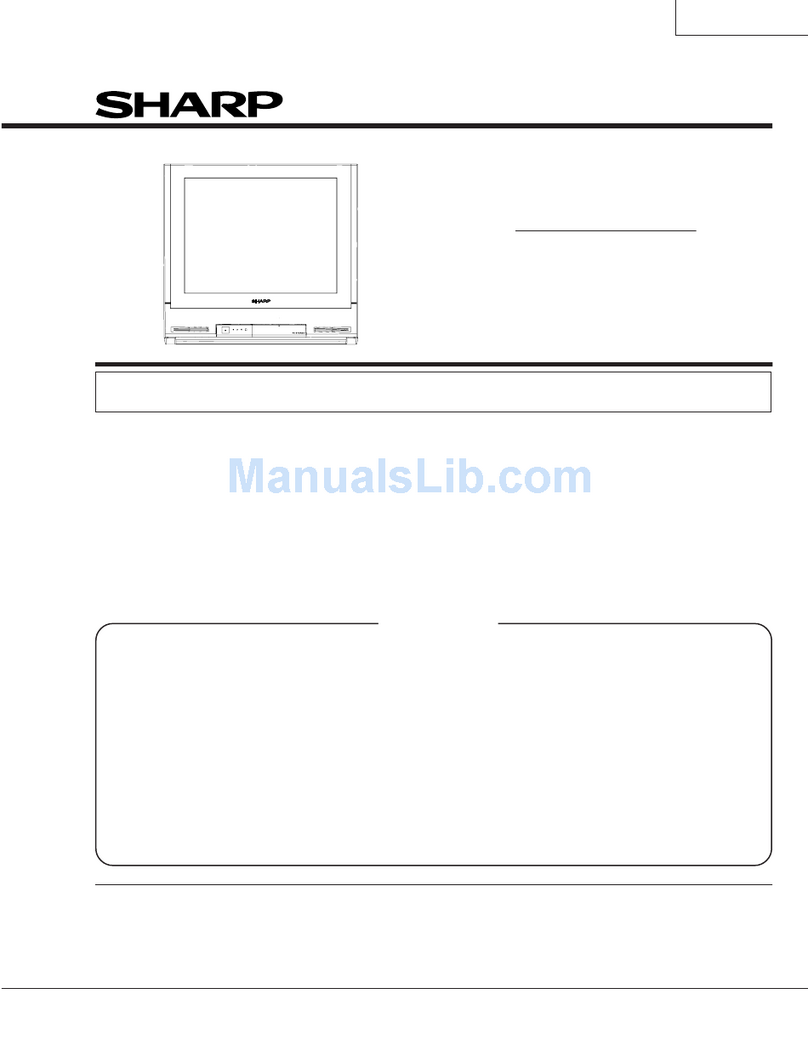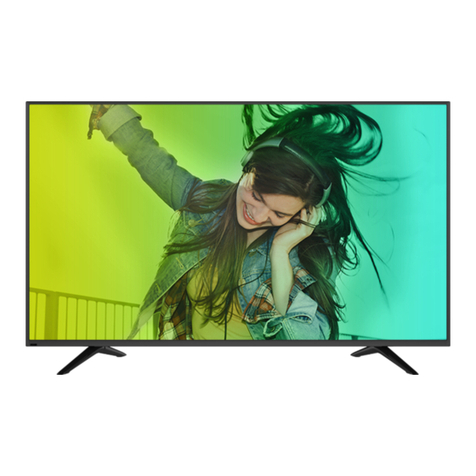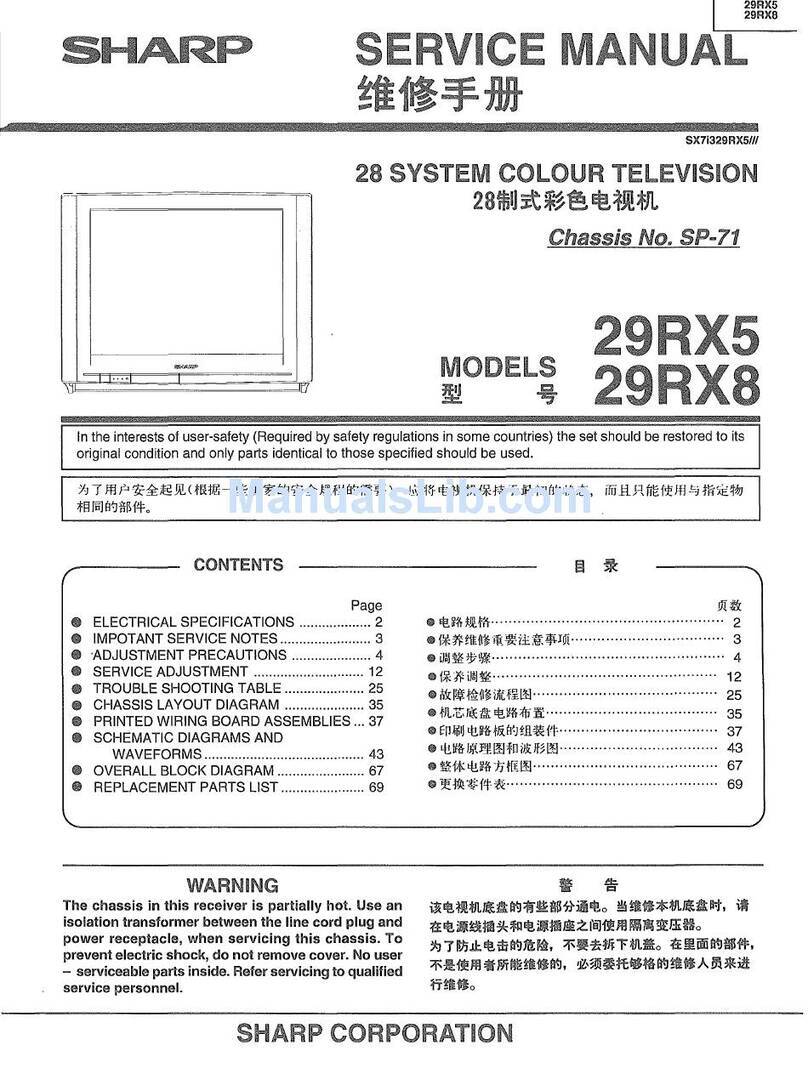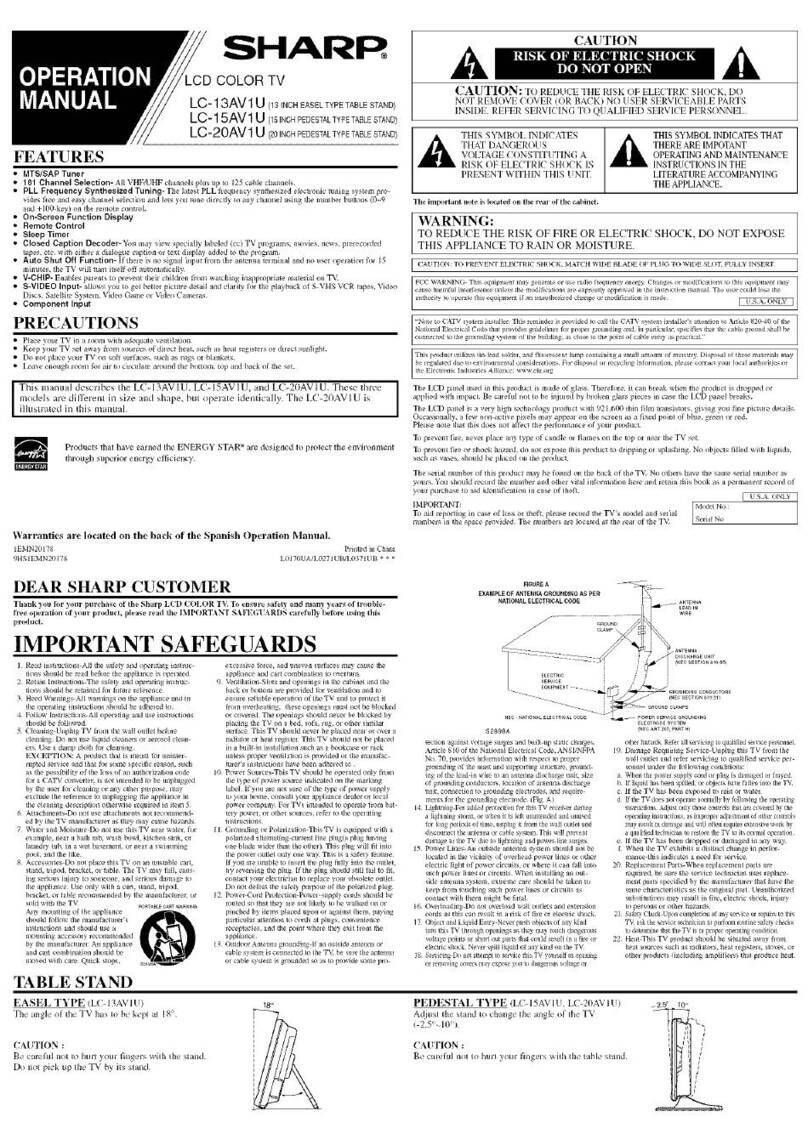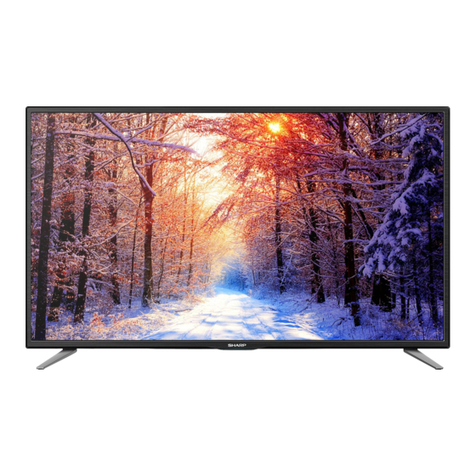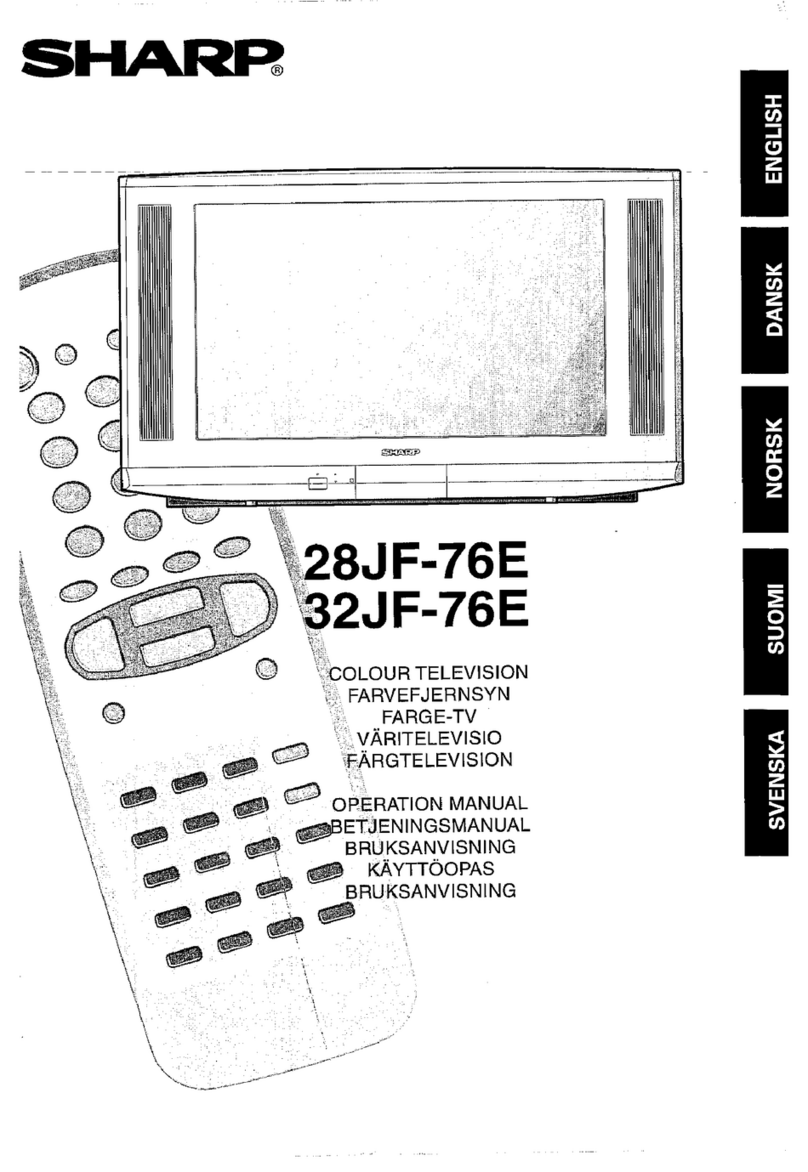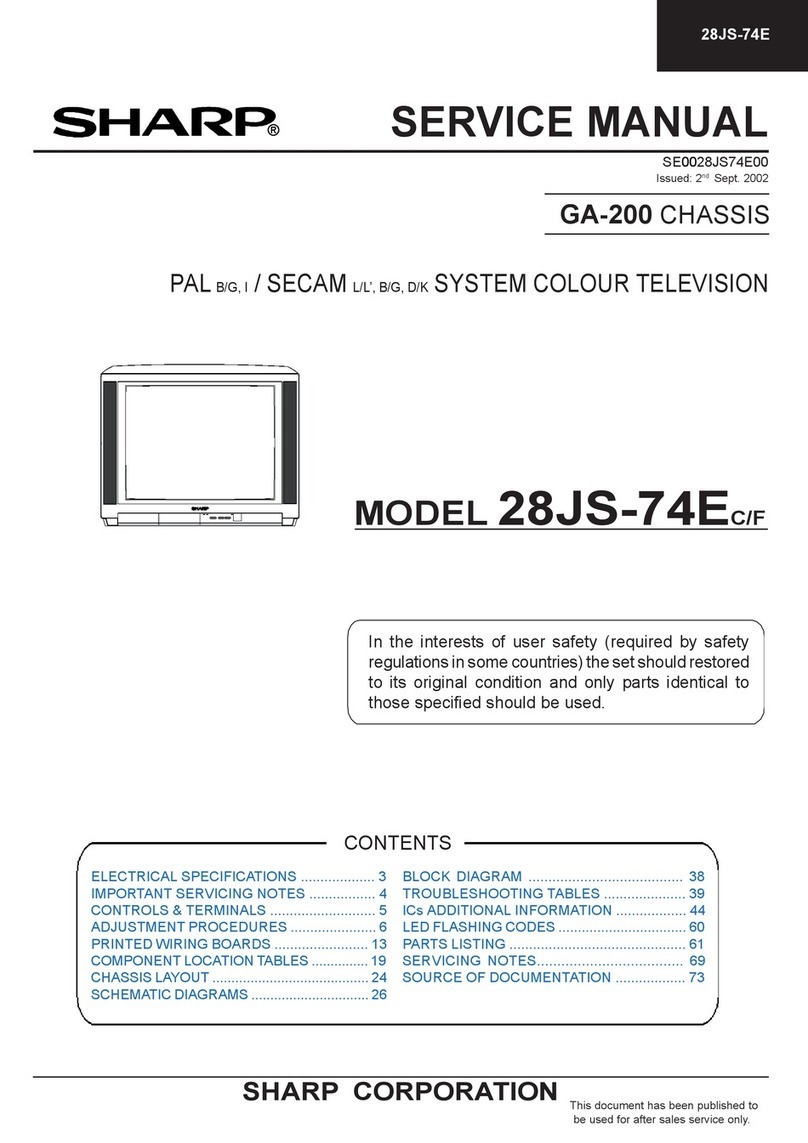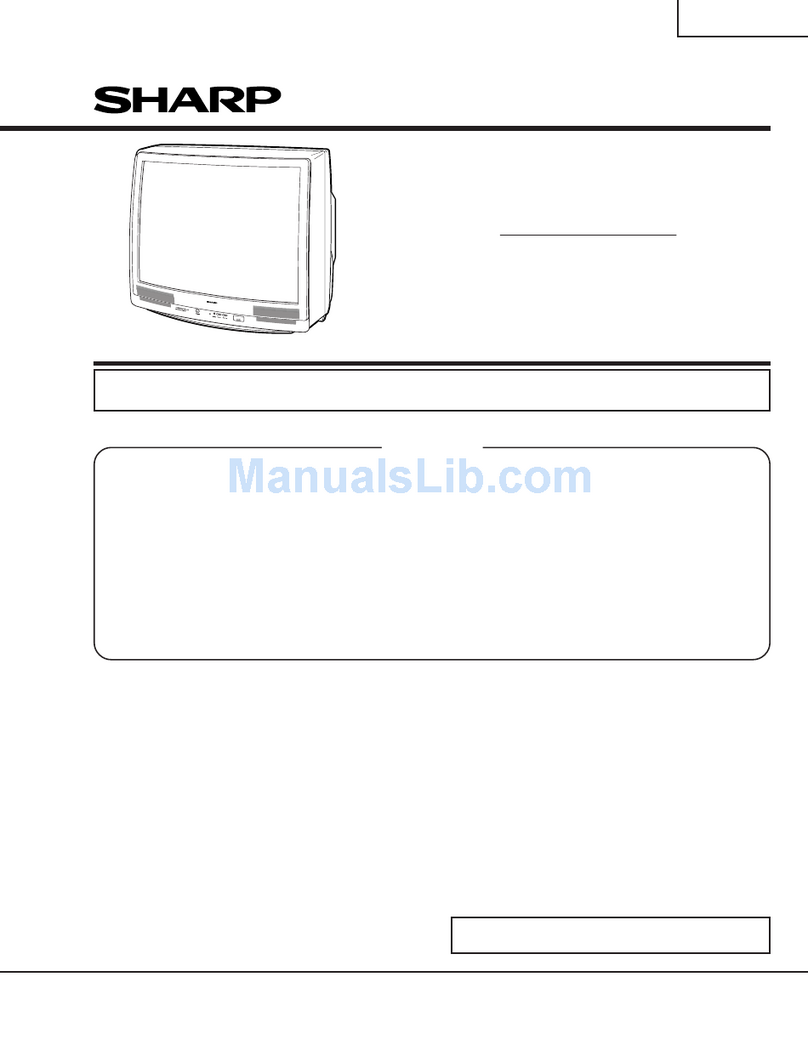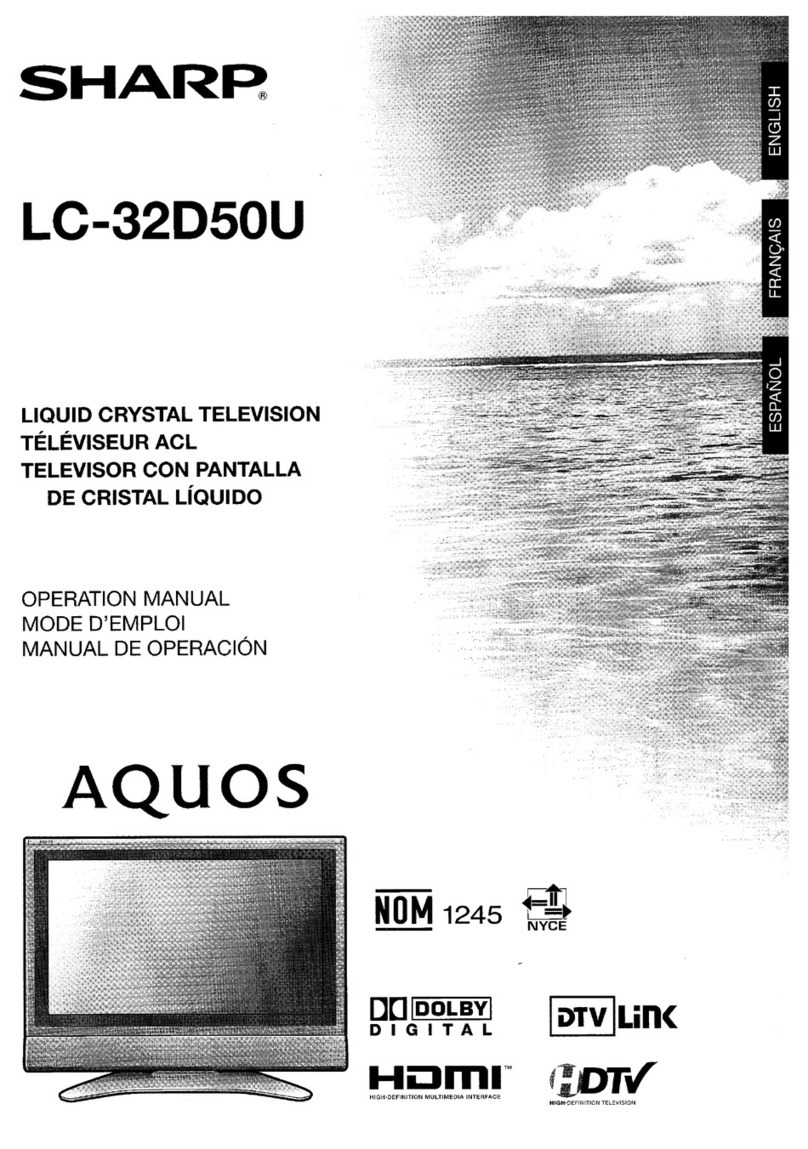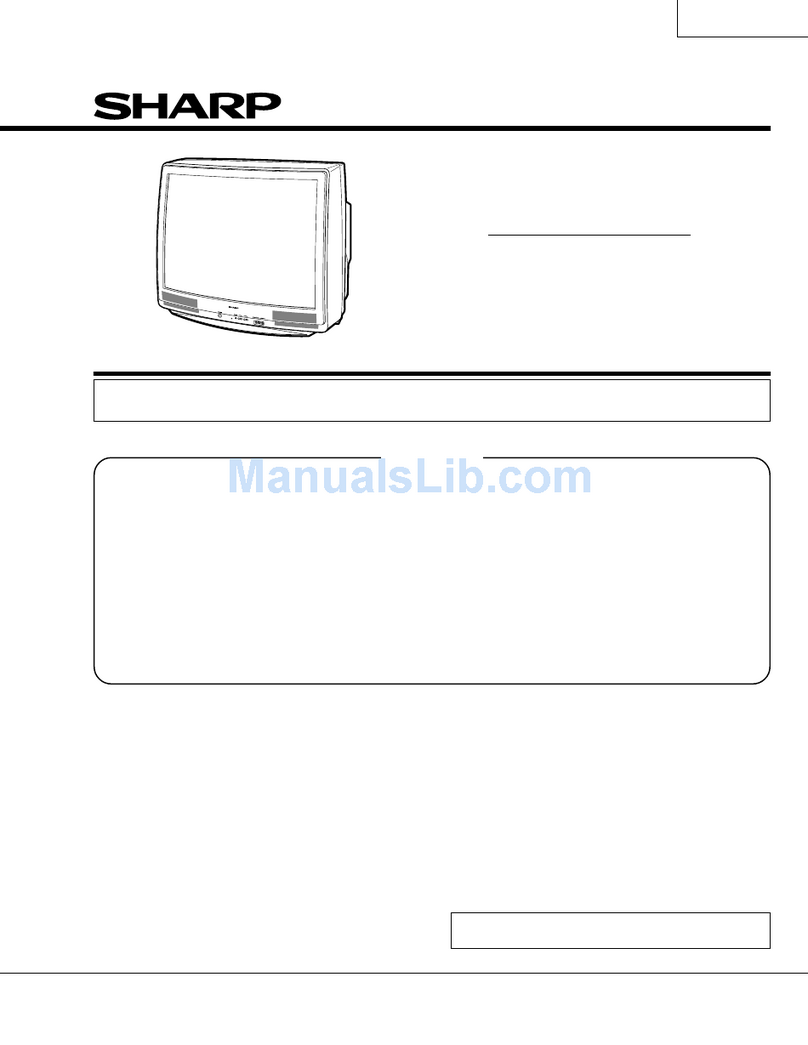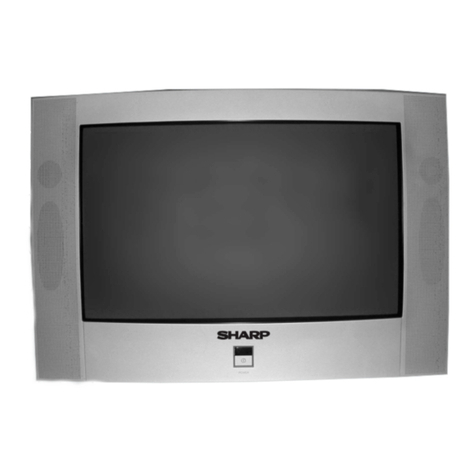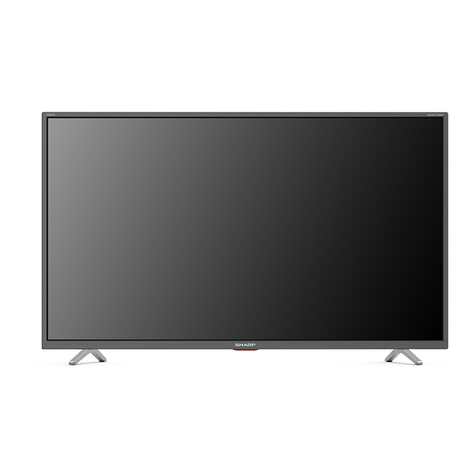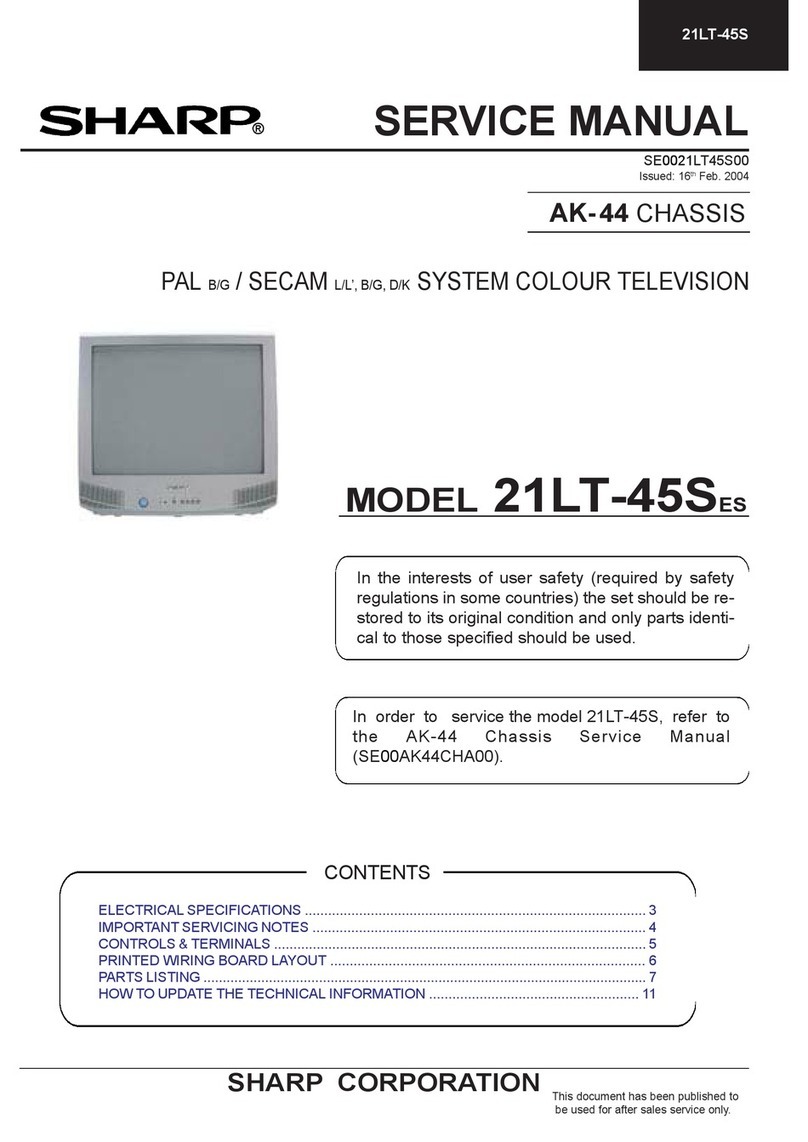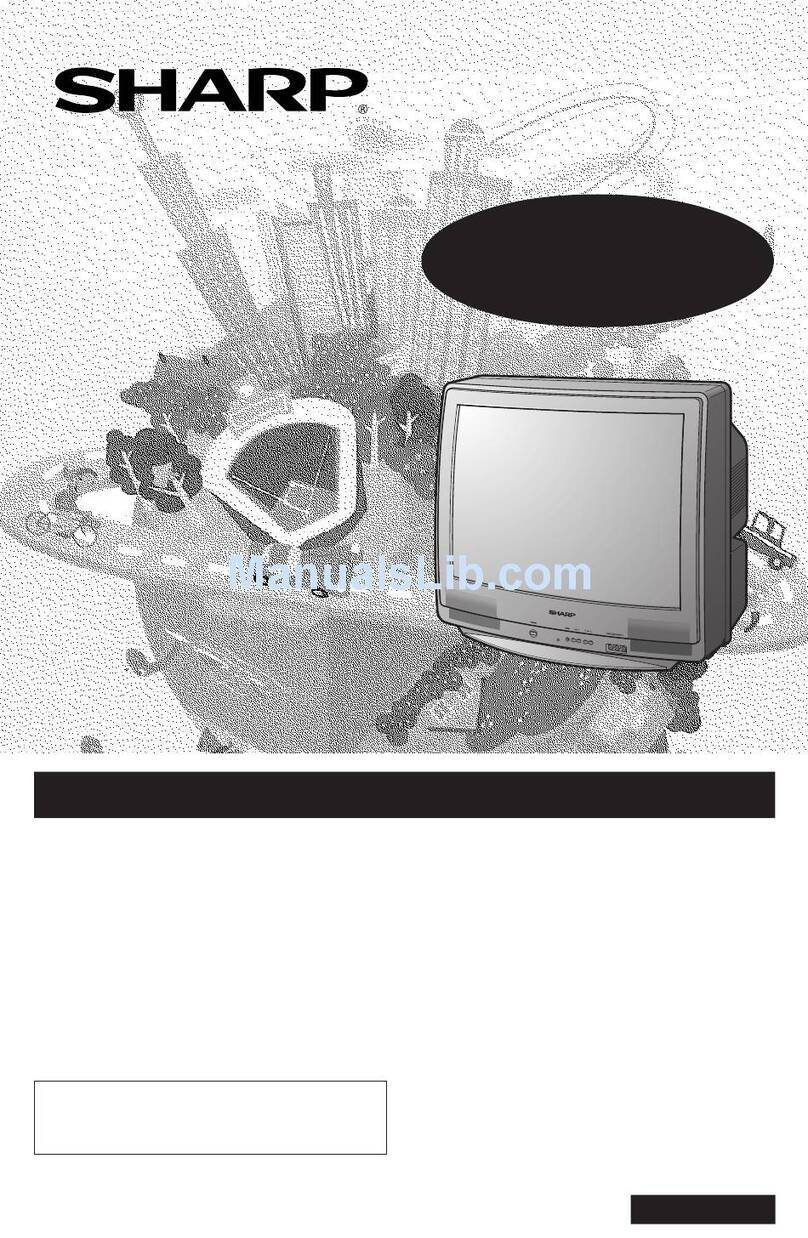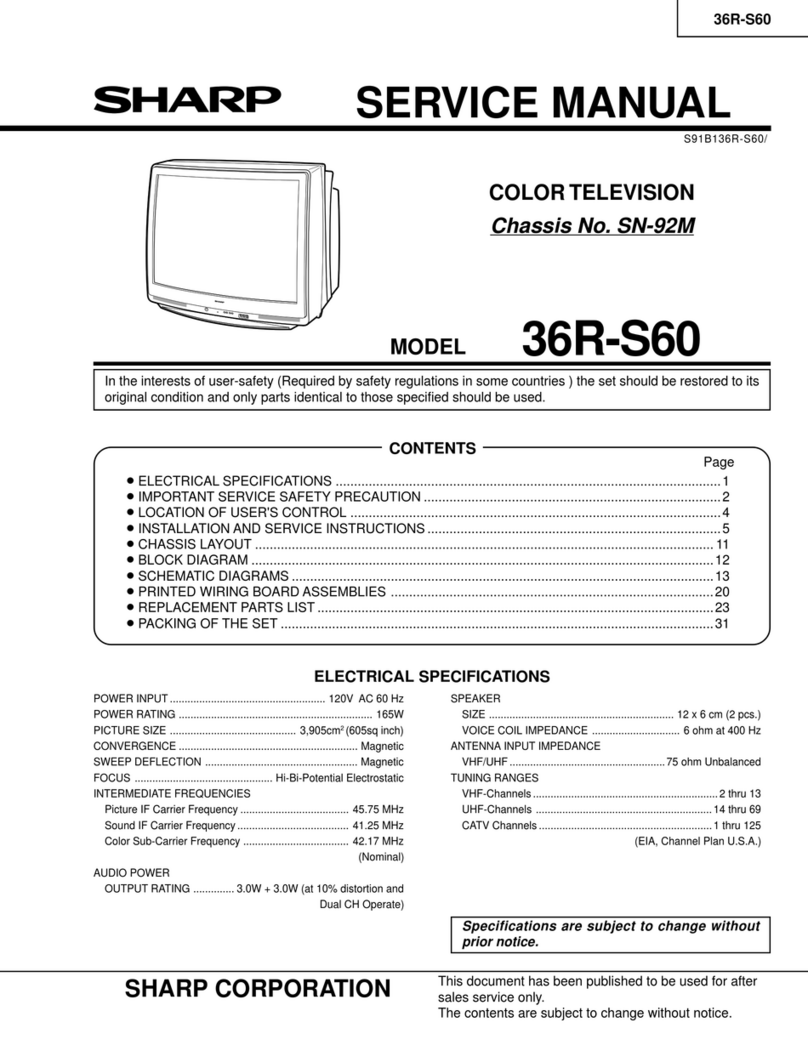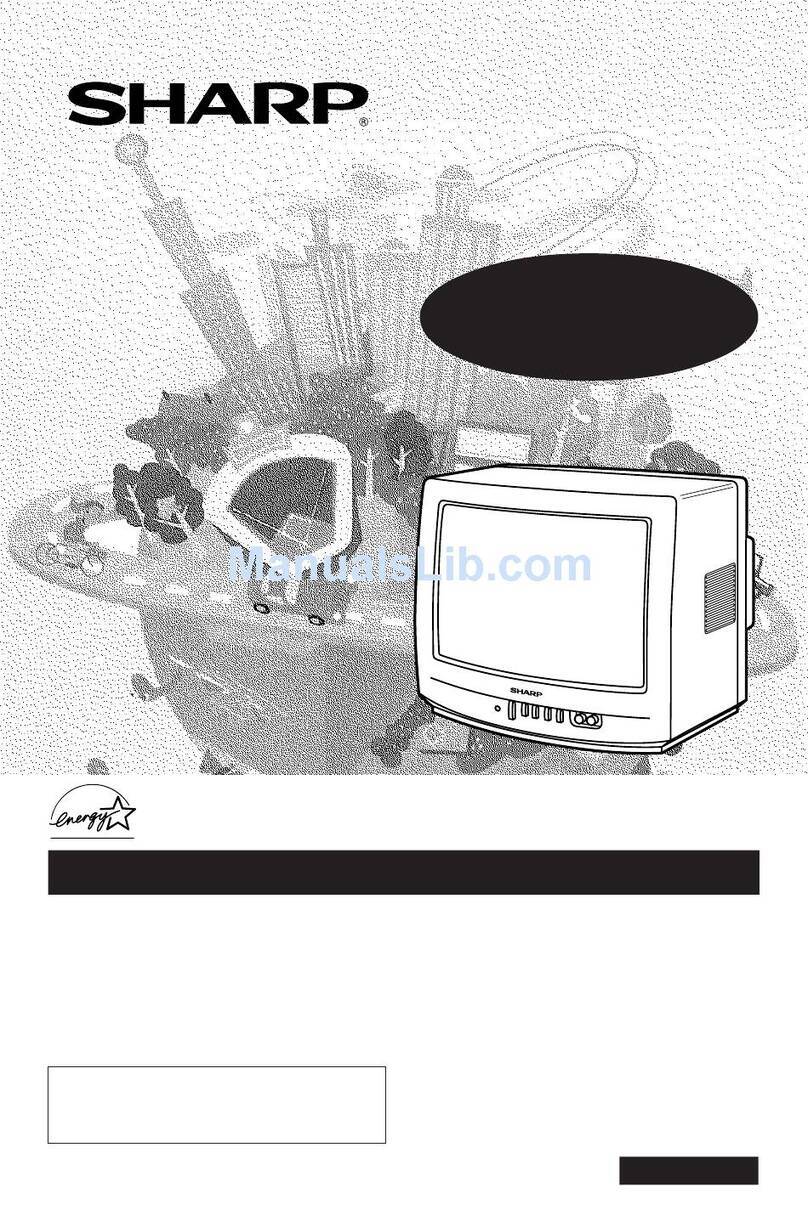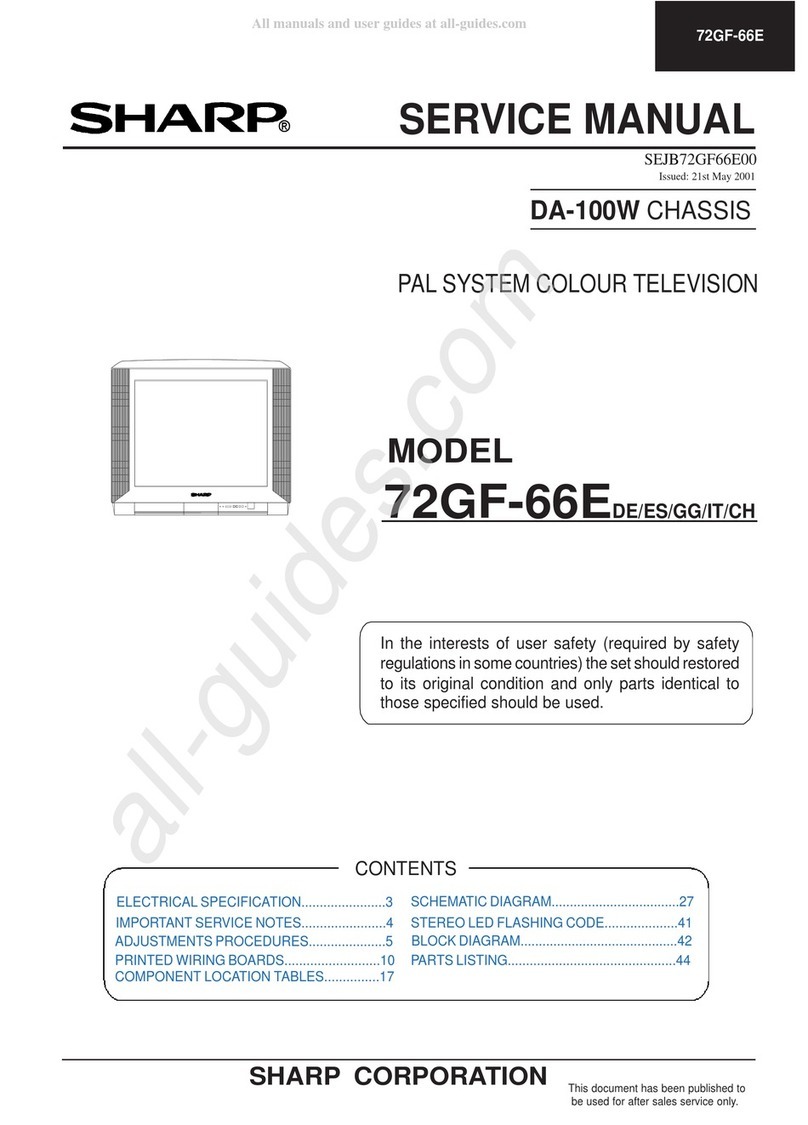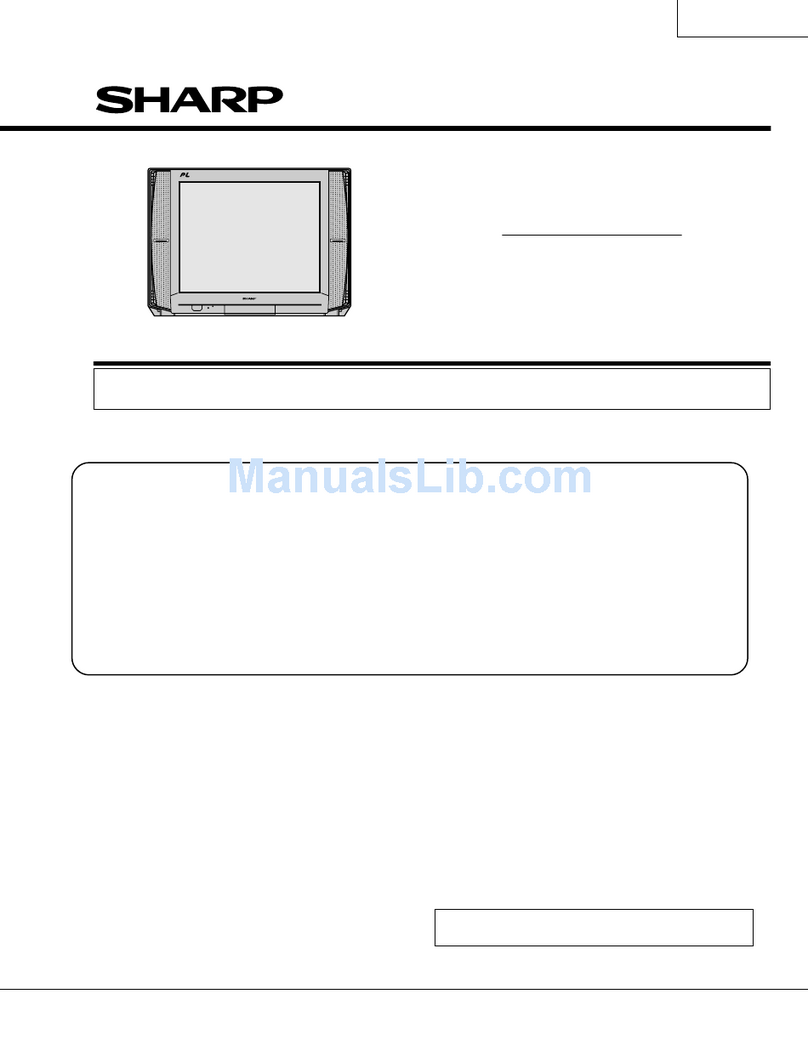LC-32D50U
ii
PRECAUTIONS A PRENDRE LORS DE LA REPARATION
AVERTISSEMENT
6. N'entreprendre aucune modification de tout circuit. C'est dan-
gereux.
7. Débrancher le récepteur avant toute réparation.
VERIFICATIONS CONTRE L'INCEN-DIE ET LE
CHOC ELECTRIQUE
Avant de rendre le récepteur à l'utilisateur, effectuer les vérifica-
tions suivantes.
8. Inspecter tous les faisceaux de câbles pour s'assurer que les fils ne
soient pas pincés ou qu'un outil ne soit pas placé entre le châssis
et les autres pièces métalliques du récepteur.
9. Inspecter tous les dispositifs de protection comme les boutons de
commande non-métalliques, les isolants, le dos du coffret, les cou-
vercles ou blindages de réglage et de compartiment, les réseaux
de résistancecapacité, les isolateurs mécaniques, etc.
10.S'assurer qu'il n'y ait pas de danger d'électrocution en vérifiant la
fuite de courant, de la facon suivante:
• Brancher le cordon d'alimentation directem-ent à une prise de cou-
rant de 120V. (Ne pas utiliser de transformateur d'isolation pour cet
essai).
• A l'aide de deux fils à pinces, brancher une résistance de 1.5 k 10
watts en parallèle avec un condensateur de 0.15 F en série avec
toutes les pièces métalliques exposées du coffret et une terre con-
nue comme une conduite électrique ou une prise de terre branchée
àlaterre.
• Utiliser un voltmètre CA d'une sensibilité d'au moins 5000 /V pour
mesurer la chute de tension en travers de la résistance.
• Toucher avec la sonde d'essai les pièces métalliques exposées qui
présentent une voie de retour au châssis (antenne, coffret métal-
lique, tête des vis, arbres de commande et des boutons, écusson,
etc.) et mesurer la chute de tension CA en-travers de la résistance.
Toutes les vérifications doivent être refaites après avoir inversé la
fiche du cordon d'alimentation. (Si nécessaire, une prise d'adpata-
tion non polarisée peut être utilisée dans le but de terminer ces
vérifications.)
Tous les courants mesurés ne doivent pas dépasser 0.5 mA.
Dans le cas contraire, il y a une possibilité de choc électrique qui
doit être supprimée avant de réndre le recepteur au client.
///////////////////////////////////////////////////////////////////////////////////////////////////////////////////////////////////////////////////////////////////////////////////////////////////////////////////////////////////////////
AVIS POUR LA SECURITE
De nombreuses pièces, électriques et mécaniques, dans les téléviseur
ACL présentent des caractéristiques spéciales relatives à la sécurité,
qui ne sont souvent pas évidentes à vue. Le degré de protection ne
peut pas être nécessairement augmentée en utilisant des pièces de
remplacement étalonnées pour haute tension, puissance, etc.
Les pièces de remplacement qui présentent ces caractéristiques sont
identifiées dans ce manuel; les pièces électriques qui présentent ces
particularités sont identifiées par la marque " " et hachurées dans
la liste des pièces de remplacement et les diagrammes schématiques.
Pour assurer la protection, ces pièces doivent être identiques à celles
utilisées dans le circuit d'origine. L'utilisation de pièces qui n'ont pas
les mêmes caractéristiques que les pièces recommandées par l'usine,
indiquées dans ce manuel, peut provoquer des électrocutions, incend-
ies, radiations X ou autres accidents.
///////////////////////////////////////////////////////////////////////////////////////////////////////////////////////////////////////////////////////////////////////////////////////////////////////////////////////////////////////////
Ne peut effectuer la réparation qu' un technicien spécialisé qui s'est parfaitement accoutumé à toute vérification de sécurité et aux
conseils suivants.
PRECAUTION: POUR LAPROTECTION CONTINUE
CONTRE LES RISQUES D'INCENDIE,
REMPLACER LE FUSIBLE
F701 (8A, 125V),
F4701, F5701 (3A~, 250V, 115 C)
DVM
ECHELLE CA
1.5k ohm
10W
0.15
µ
F
SONDE D'ESSAI
AUX PIECES
METALLIQUES
EXPOSEES
BRANCHER A UNE
TERRE CONNUE
